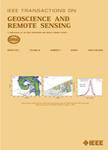版权所有:内蒙古大学图书馆 技术提供:维普资讯• 智图
内蒙古自治区呼和浩特市赛罕区大学西街235号 邮编: 010021

作者机构:Univ Colorado Boulder Dept Elect Comp & Energy Engn Geomathemat Remote Sensing & Cryospher Sci Lab Boulder CO 80309 USA Brown Univ Ctr Fluid Mech Providence RI 02912 USA Univ Maryland Dept Geog Sci College Pk 20742 MD USA Univ Maryland Dept Atmospher & Ocean Sci College Pk MD 20742 USA
出 版 物:《IEEE TRANSACTIONS ON GEOSCIENCE AND REMOTE SENSING》 (IEEE Trans Geosci Remote Sens)
年 卷 期:2023年第61卷
页 面:1页
核心收录:
学科分类:0808[工学-电气工程] 1002[医学-临床医学] 08[工学] 0708[理学-地球物理学] 0816[工学-测绘科学与技术]
基 金:U.S. National Aeronautics and Space Administration (NASA) Earth Sciences Division [80NSSC20K0975 80NSSC22K1155 80NSSC18K1439 NNX17AG75G 80NSSC20K0966 80NSSC17K0006]
主 题:Sea ice Sea surface Photonics Arctic Laser beams Surface topography Ice Arctic sea ice computational algorithm cryospheric sciences Cloud and land Elevation Satellite (ICESat-2) melt pond satellite altimetry
摘 要:As climate warms and the transition from a perennial to a seasonal Arctic sea-ice cover is imminent, understanding melt ponding is central to understanding changes in the new Arctic. National Aeronautics and Space Administration (NASA) s Ice, Cloud and land Elevation Satellite (ICESat-2) has the capacity to provide measurements and monitoring of the onset of melt in the Arctic and on melt progression. Yet ponds are currently not identified on the ICESat-2 standard sea-ice products, in which only a single surface is determined. The objective of this article is to introduce a mathematical algorithm that facilitates automated detection of melt ponds in the ICESat-2 Advanced Topographic Laser Altimeter System (ATLAS) data, retrieval of two surface heights, pond surface and bottom, and measurements of depth and width of melt ponds. With ATLAS, ICESat-2 carries the first spaceborne multibeam micropulse photon-counting laser altimeter system, operating at 532-nm frequency. ATLAS data are recorded as clouds of discrete photon points. The Density-Dimension Algorithm for bifurcating sea-ice reflectors (DDA-bifurcate-seaice) is an autoadaptive algorithm that solves the problem of pond detection near the 0.7-m nominal along-track spacing of ATLAS data, utilizing the radial basis function for calculation of a density field and a threshold function that automatically adapts to changes in the background, apparent surface reflectance, and some instrument effects. The DDA-bifurcate-seaice is applied to large ICESat-2 datasets from the 2019 and 2020 melt seasons in the multiyear Arctic sea-ice region. Results are evaluated by comparison with those from a manually forced algorithm.